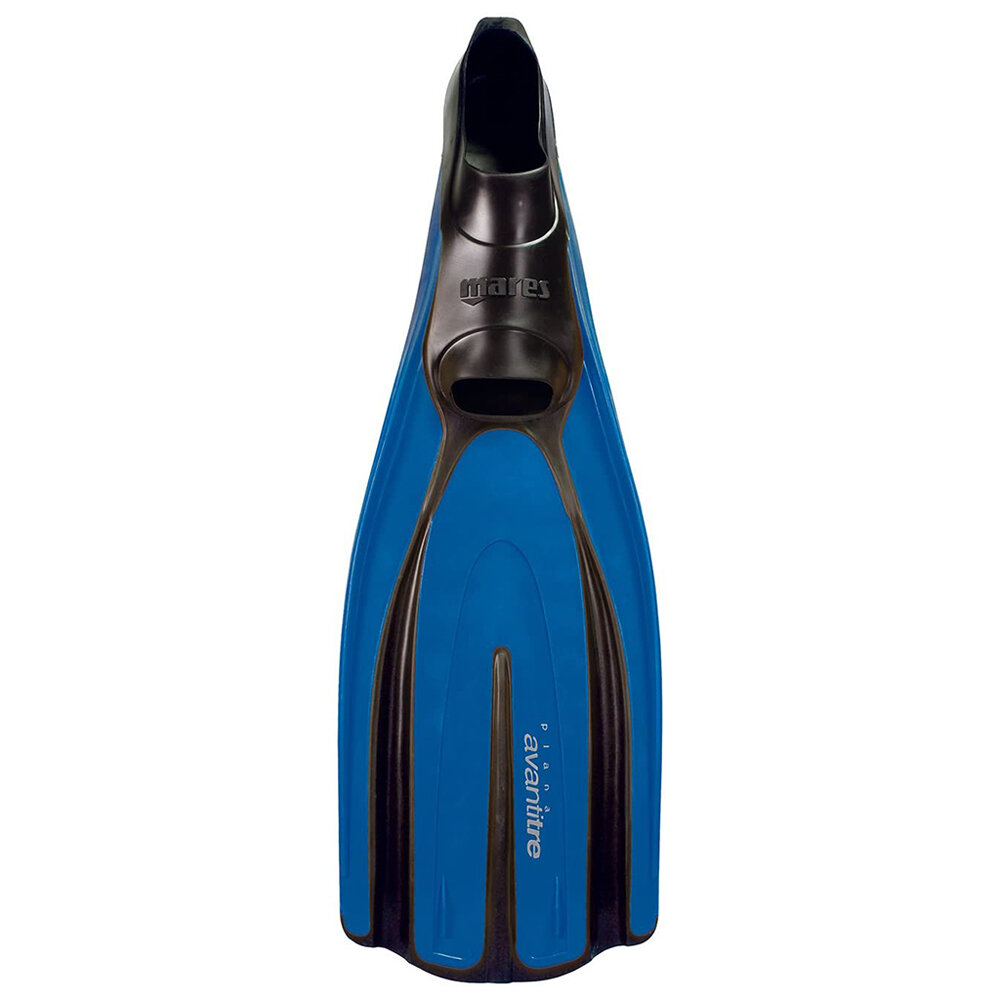Scuba Equipment Guide: Fins (not Flippers!)
The most common way of moving quickly and efficiently through the water, the right fins can make your diving effortless!
First envisioned by Leonardo Da Vinci in the 15th Century, there has been a huge evolution in fin design. Now divers can glide through the water like they belong there.
As simple as fins seem there is a lot of science that go into how they work.
Understanding the different styles and features is important in deciding the right type of fin for you and the type of diving that you enjoy.
However, despite differences in materials, construction and style, all fins consist of a large blade that provides resistance for pushing against the water and a foot pocket that secures the blade to your foot.
Styles & Features of Fins:
Full Foot
Full foot fins slide over your feet like a shoe and are generally worn barefoot. This makes them quick and easy to put on and take off. Most full foot fins have smaller blades making then easy to travel with and so are often used in warmer waters. Whilst full foot scuba fins exist they are most popular amongst snorkelers and swimmers. There are a few exceptions however such as free diving fins which have much longer or wider blades (see below).
Open-heel
The most common type of fin amongst scuba divers (especially in BC!) are open-heel fins. They are generally larger, full power fins ideal for propelling you through the water with full scuba gear on. The open foot pocket will come in different sizes and are designed to be used with wetsuit or drysuit boots to provide padding for a comfortable fit.
Adjustable Straps or Springs
Open-heel fins will have 2 main types of strap options: Adjustable Straps with quick release buckles or Spring/Bungee Heel Straps.
Adjustable straps allow you to cinch the strap up after putting your foot in the fin ensuring a snug fit. The quick release buckle then allows you to easily release the strap on one side to take the fins off. The adjustment of the strap allows for the possibility of using different size boots with the same type of fin.
Spring/Bungee Heel Straps are designed for simple ease of use in donning and doffing your fins. You choose the correct size of spring/bungee for your fins (many fins will come with springs built into them) and then stretch the strap over your foot when putting the fin on. The advantage of this is never having to worry about adjustment and being almost indestructible.
Ribs, Vents & Channels
Ribs on fins are usually located along the edges of the fin blade. They are designed to stabilize the fin by moving the water straight along the blade. This reduces any shimmying effect and improves forward motion instead of wasted energy.
Channeling on a fin also helps guide the water in a forward motion. On your power stroke the fin will flex and create a U-shaped channel that captures and moves water efficiently.
Vented fins allow the water to pass through the fin, giving reduced resistance that would otherwise have been wasted energy. The vents are generally located near the base of the blade next to the foot pocket. This allows less stress and effort on the foot and means greater propulsion on power strokes.
Fins will use different materials (such as rubber, plastic, neoprene and thermoplastic) to make the ribbing, channeling and vents work and flex in different ways.
Freediving Fins
Freediving has very specific styled fins to help you move through the water as easily and efficiently as possible. The two most common styles of freediving fin are ones with ultra long blades and the monofin.
Ultra long blades provide tremendous flexibility. They are often made with a lightweight plastic or carbon fiber to make the channeling on the fin more efficient. The extra length gives lots of propulsion for little to no effort. The added length does reduce sideways maneuverability however making them no good for scuba divers.
The monofin has both foot pockets attached directly to one large, wide blade. Whilst having to use a slightly different kicking technique to fin, the large surface area of the blade and kicking simultaneously with both legs gives lots of power and propulsion in the same way as the tail of a dolphin, shark or whale would.
Choosing the right fin:
The most important concerns in choosing your first or latest set of fins are fit and comfort. You need to ensure that you are investing in the the right fins for the type and location of diving you will be doing. This includes water temperatures, currents, wrecks/caves, and places you will be walking.
While full foot fins are fine for lighter tropical diving and snorkelling, the best bet for most divers will be open heel fins, allowing you to use them in both cold and warmer waters. Similarly, if shore diving, open heel fins allow the use of wetsuit/drysuit boots which give protection to your feet when walking over rough terrain. Always make sure to try fins on with the boots you will be wearing in the water. If you dive both warm and cold water, be wary that a set of fins might fit your wetsuit booties but will be too small for your drysuit boots.
In regard to ease of use in the water, more rigid, stiffer and wider/oversized blades will require slightly more effort and stronger legs. These fins however provide plenty of propulsion and thrust. They are often popular amongst technical, cave and wreck divers as they give lots of power to help move the extra equipment through the water, whilst being useful for using a frog kick technique which helps maneuverability in close spaces.
Shorter, lighter blades however will be far easier to kick with, although it may at times seem like you are kicking a lot and not going anywhere fast. They are enjoyable to use as there is a lot less effort required to move through the water. This makes them very popular in easy warm water dive sites where there isn’t much current or drift and power isn’t a necessity.
When trying on the fin, it should fit snugly but not pinch and not wiggle or slide side to side. The best fitting fin will be comfortable and feel like an extension of your leg when you kick.
The experienced staff at Rowand’s Reef are ready to help give you the best advice on what is the right fin for you. We have a selection of top performing fins from multiple brands and can make sure that you can glide effortlessly through the water where ever you go diving!




















